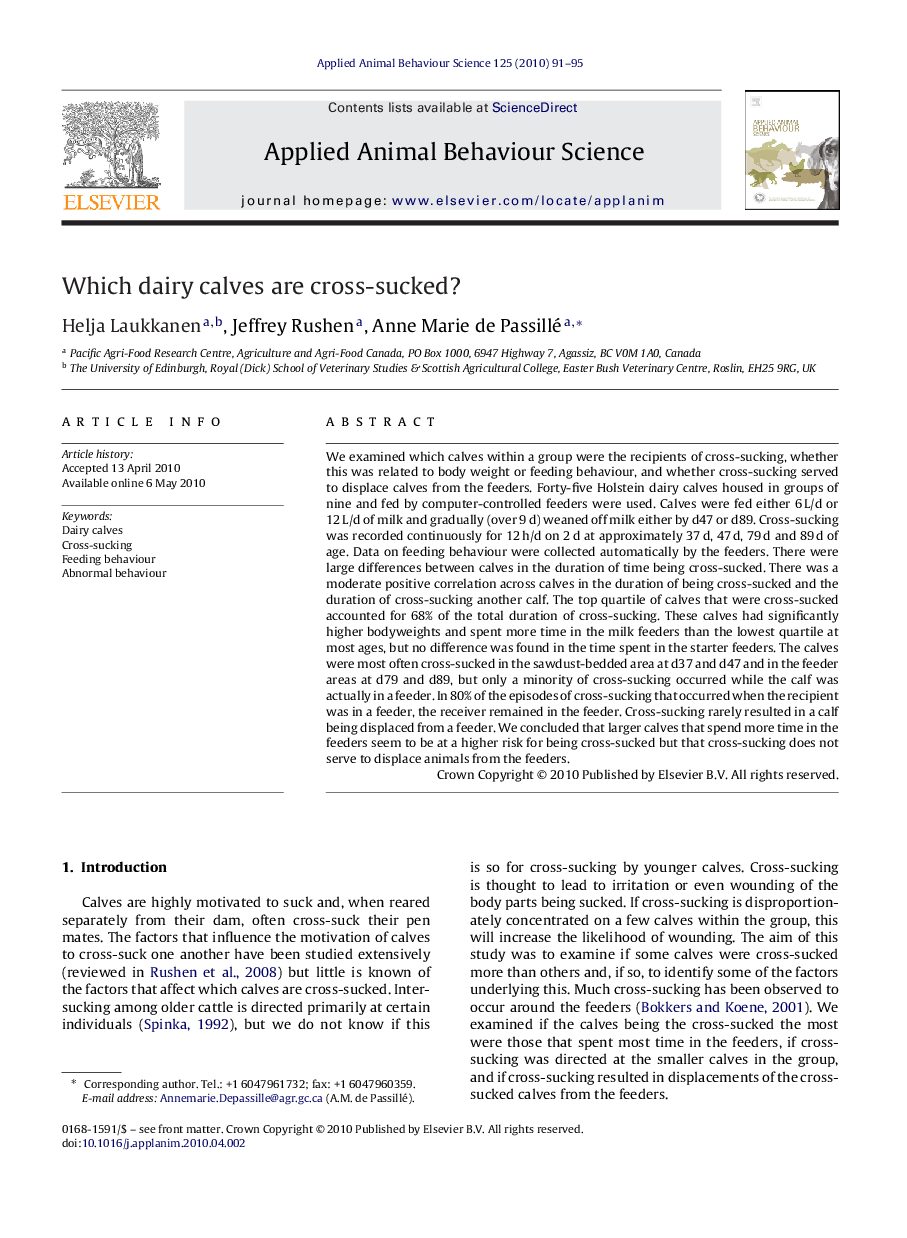| Article ID | Journal | Published Year | Pages | File Type |
|---|---|---|---|---|
| 4523407 | Applied Animal Behaviour Science | 2010 | 5 Pages |
We examined which calves within a group were the recipients of cross-sucking, whether this was related to body weight or feeding behaviour, and whether cross-sucking served to displace calves from the feeders. Forty-five Holstein dairy calves housed in groups of nine and fed by computer-controlled feeders were used. Calves were fed either 6 L/d or 12 L/d of milk and gradually (over 9 d) weaned off milk either by d47 or d89. Cross-sucking was recorded continuously for 12 h/d on 2 d at approximately 37 d, 47 d, 79 d and 89 d of age. Data on feeding behaviour were collected automatically by the feeders. There were large differences between calves in the duration of time being cross-sucked. There was a moderate positive correlation across calves in the duration of being cross-sucked and the duration of cross-sucking another calf. The top quartile of calves that were cross-sucked accounted for 68% of the total duration of cross-sucking. These calves had significantly higher bodyweights and spent more time in the milk feeders than the lowest quartile at most ages, but no difference was found in the time spent in the starter feeders. The calves were most often cross-sucked in the sawdust-bedded area at d37 and d47 and in the feeder areas at d79 and d89, but only a minority of cross-sucking occurred while the calf was actually in a feeder. In 80% of the episodes of cross-sucking that occurred when the recipient was in a feeder, the receiver remained in the feeder. Cross-sucking rarely resulted in a calf being displaced from a feeder. We concluded that larger calves that spend more time in the feeders seem to be at a higher risk for being cross-sucked but that cross-sucking does not serve to displace animals from the feeders.
